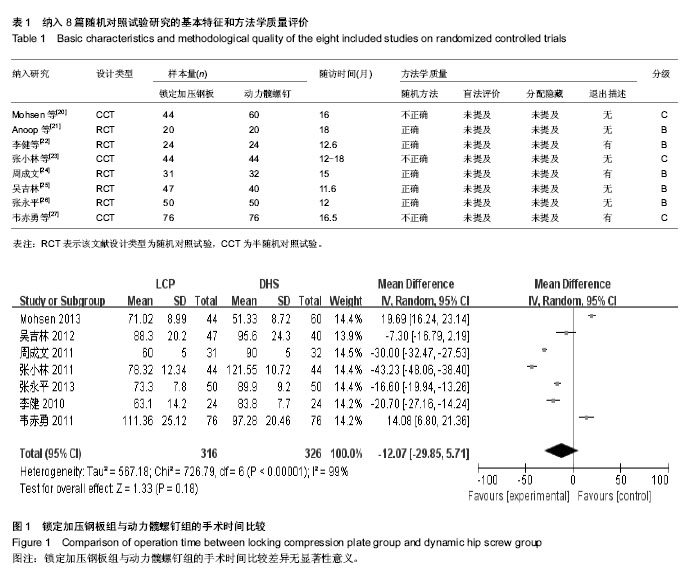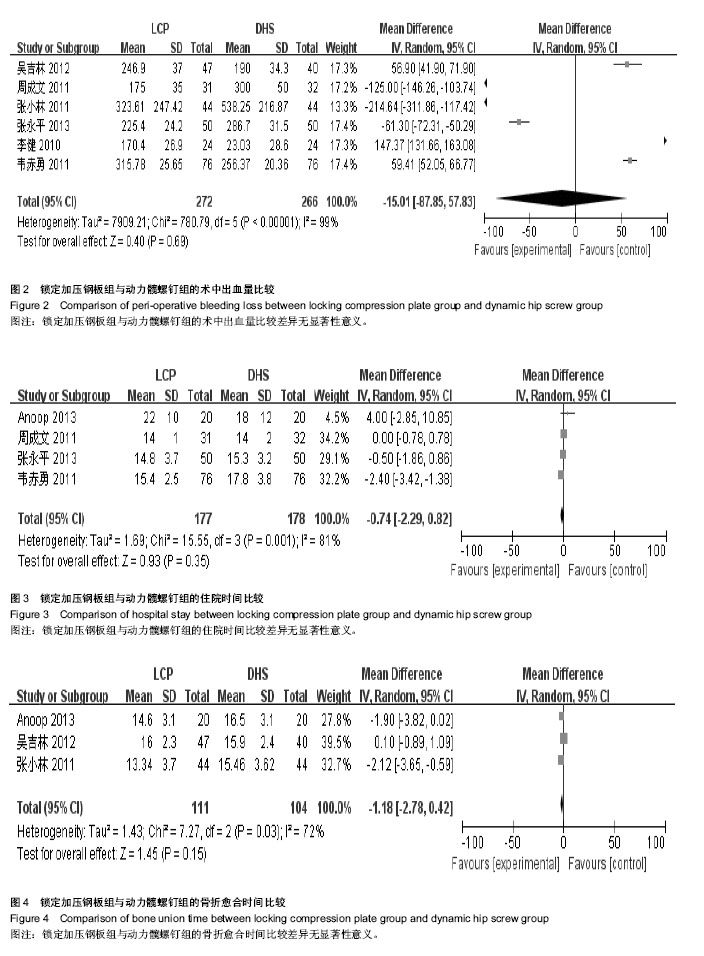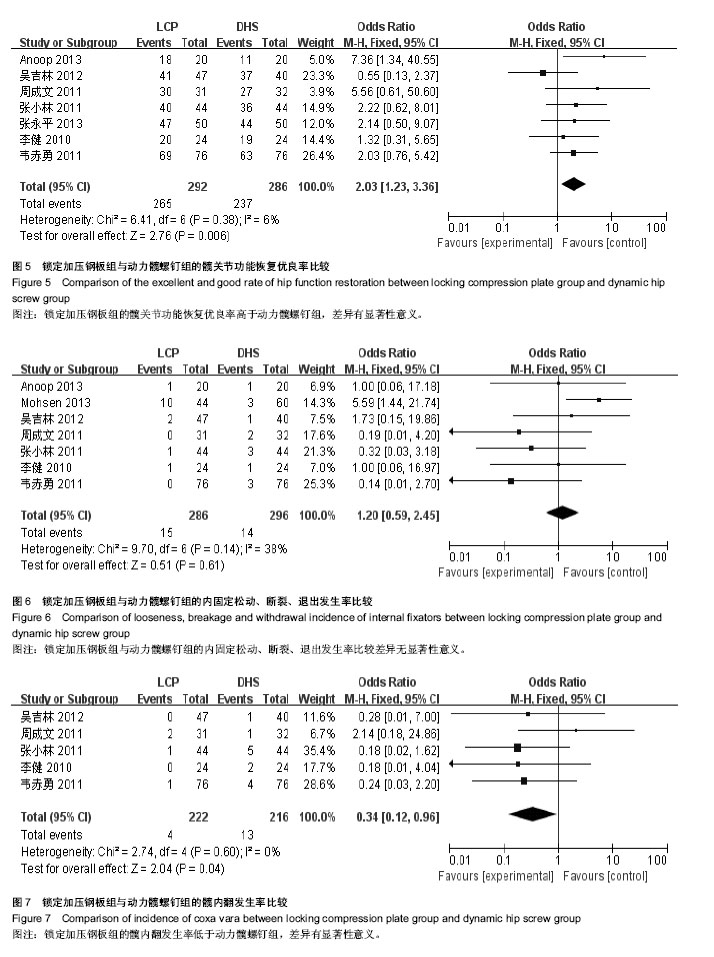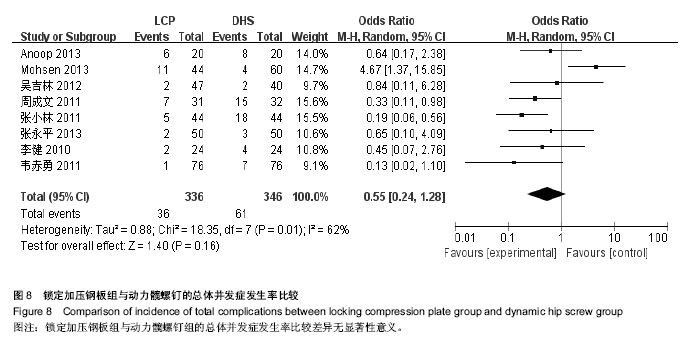| [1] Kannus P, Parkkari J, Sievanen H, et al. Epidemiology of hip fractures. Bone. 1996;18: 57-63.
[2] Wu TY, Jen MH, Bottle A, et al. Admission rates and in-hospital mortality for hip fractures in England 1998 to 2009: time trends study. J Publ Health. 2011;33(2):284-291.
[3] Borges A, Torres J, São Simão R, et al. Impact of preoperative analytical values on post-operative mortality rate of intertrochanteric fractures. Acta Med Port. 2014;27(2): 218-222,
[4] Zhang L, Shen J, Yu SP. Percutaneous Compression Plate versus Dynamic Hip Screw for Treatment of Intertrochanteric Hip Fractures: A Meta-Analyse of Five Randomized Controlled Trials. Scientific World J. 2014; 5: 1-11.
[5] Jain R, Basinski A, Kreder HJ. Nonoperative treatment of hip fractures. Int Orthop. 2003;27(1):11.
[6] Lin PC, Chang SY. Functional recovery among elderly people one year after hip fracture surgery. J Nurs Res. 2004;12(1): 72-82.
[7] Canale ST, Beaty JH. Campbell's operative orthopaedics. 12th ed. Philadelphia (PA): Mosby, 2013.
[8] Kaplan K, Miyamoto R, Levine BR, et al. Surgical Management of Hip Fractures: An Evidence-based Review of the Literature. II: Intertrochanteric Fractures. J Am Acad Orthop Surg. 2008;16(11): 665-673.
[9] Kouzelis A, Kravvas A, Mylonas S, et al. Double axis cephalocondylic fixation of stable and unstable intertrochanteric fractures: early results in 60 cases with the veronail system. Open Orthop J. 2014; 8: 60-68.
[10] 孙欣,曾荣,陈俊虎,等.股骨粗隆间骨折三种内固定治疗方法疗效比较[J].中国矫形外科杂志, 2012, 20(10): 884-886.
[11] 贺翎,米萍.股骨近端解剖型锁定钢板治疗骨质疏松性股骨粗隆间骨折21例[J].中国骨与关节损伤杂志, 2010, 25(8):714- 715.
[12] Zha GC, Chen ZL, Qi XB,et al. Treatment of pertrochanteric fractures with a proximal femur locking compression plate. Injury. 2011;42(11):1294-1299.
[13] Laohapoonrungsee A, Arpornchayanon O, Phornputkul C. Two-hole side-plate DHS in the treatment of intertrochanteric fracture: results and complications. Injury. 2005; 36(11): 1355-1360.
[14] 贺建军,葛建忠.股骨转子间骨折10年国际发展趋势[J].中国组织工程研究, 2012, 16(22): 4151-4158.
[15] Zhu QL, Yan MH, Zhao LL, et al. Analysis of treatment of osteoporotic intertrochanteric fracture of femur with the locking compression plate (LCP). Zhongguo Gu Shang. 2011; 24(5):378-381.
[16] Luo XP, He SQ, Li ZA. Case-control studies on locking plates and dynamic hip screw in treatment of intertrochanteric hip fractures. Zhongguo Gu Shang. 2011;24(3): 242-244.
[17] 罗群强,彭维波,莫雄革,等.股骨近端解剖锁定钢板及动力髋螺钉治疗老年股骨转子间骨折的对比研究[J].中国矫形外科杂志, 2012, 20(10): 887-889.
[18] Wang Y, Yang YY, Yu ZH, et al. Comparative study of intertrochanteric fractures treated with proximal femur locking compress plate in aged. Zhongguo Gu Shang. 2014;24(5): 370-373.
[19] 刘春杰,张伟曾,褚鹏程.动力髋螺钉与锁定加压接骨板置入内固定治疗高龄老年股骨转子间骨折的效果比较[J].中国组织工程研究与临床康复, 2011, 15(17): 3098-3102.
[20] Mohsen MK, Ahmadreza M, Sina KJ, et al. Fixation of Intertrochanteric Fractures: Dynamic Hip Screw versus Locking Compression Plate. Trauma Mon. 2013;18(2): 67-70.
[21] Anoop CD, Deepak J, Arvind BG, et al. Proximal femoral locking plate versus dynamic hip screw for unstable intertrochanteric femoral fractures. J Orthop Surg. 2013;21(3): 317-322.
[22] 李健,张振山,赵洪普,等.股骨近端锁定解剖钢板与传统动力髋螺钉置入内固定治疗股骨转子间骨折的比较[J].中国组织工程研究与临床,2010,14(35): 6627-6631.
[23] 张小林,陈永华,陈小勇,等.锁定钢板和动力髋螺钉治疗股骨转子骨折[J].临床骨科杂志, 2011,14(6):684-686.
[24] 周成文.三种钉板系统内固定治疗老年股骨转子间骨折的临床疗效观察[J].中国医师进修杂志, 2011,34(32): 54-56.
[25] 吴吉林.股骨近端锁定钢板与动力髋螺钉治疗转子间骨折的分析[J].西南国防医药, 2012,22(10):1074-1077.
[26] 张永平.动力髋螺钉与解剖型锁定钢板内固定治疗股骨粗隆间骨折的疗效比较[J].中国基层医药, 2013,20(10):1481-1483.
[27] 韦赤勇,杨有猛.锁定钢板与动力髋螺钉治疗老年患者股骨转子间骨折的疗效比较[J].广西医科大学学报, 2011, 28(5): 736-738. |



